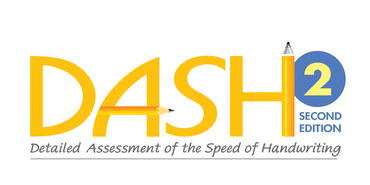Detailed Assessment of Speed of Handwriting, Second Edition (DASH-2) is a reliable measure of handwriting speed for children and young adults. DASH-2 helps identify functional handwriting difficulties and provides relevant information for intervention planning.

Detailed Assessment of Speed of Handwriting, Second Edition
DASH-2
Detailed Assessment of Speed of Handwriting, Second Edition (DASH-2) is a reliable measure of handwriting speed for children and young adults. DASH-2 helps identify functional handwriting difficulties and provides relevant information for intervention planning.Choose from our formats
Kits
Starter & complete kits, print & digital
1 option
Test forms reports
Booklets, record forms, answer sheets, report usages & subscriptions
1 option
Support materials
Manuals, stimulus books, replacement items & other materials
4 options
All products
All tests and materials offered for DASH-2
6 options
